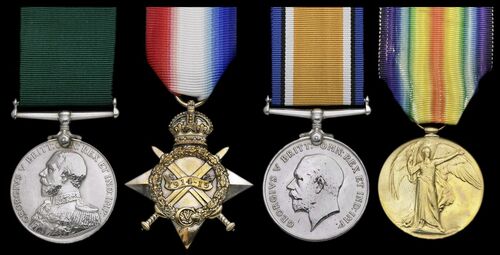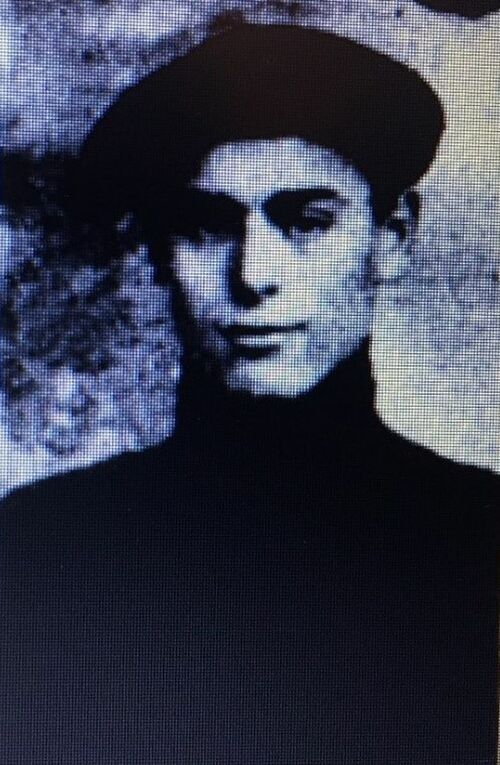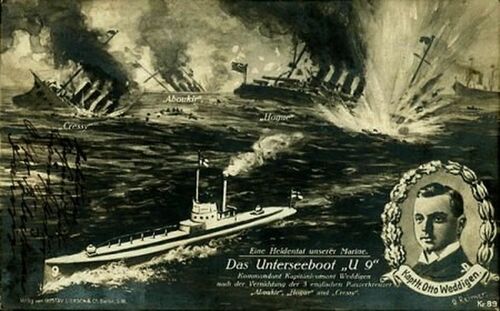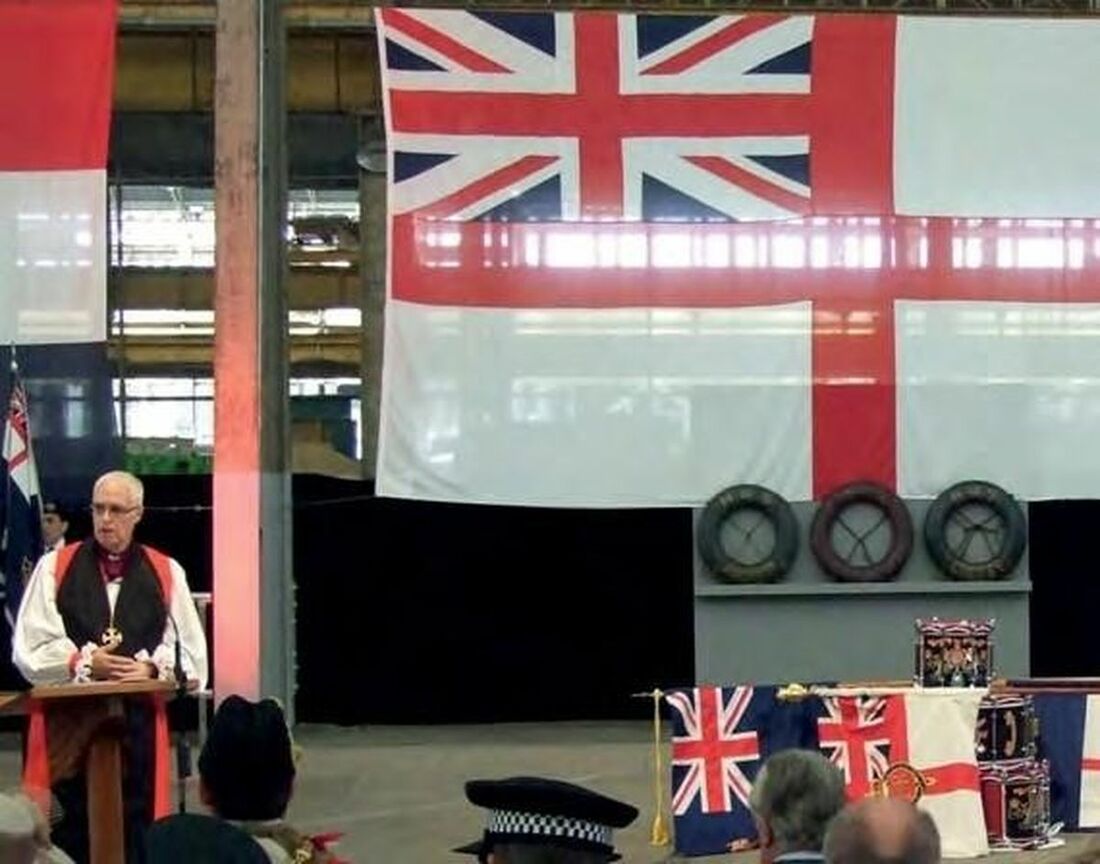Auction: 23001 - Orders, Decorations and Medals
Lot: 128
'Much as one regrets the loss of life one cannot help thinking that it is a useful warning to us - we had almost begun to consider the German submarines as no good.'
Future First Sea Lord Dudley Pound on learning of the loss of the cruisers Aboukir, Cressy and Hogue to the U-9 in September 1914.
A Great War campaign group of four awarded to Leading Seaman H. A. Catchpole, Royal Naval Reserve, who survived the sinking of H.M.S. Hogue in the North Sea by the German submarine U-9 on 22 September 1914 - along with her consorts Aboukir and Cressy on the same date
Owing to their being obsolete - poorly armed and armoured - the ships of the 7th Cruiser Squadron were nicknamed "The Live Bait Squadron": it was a prescient accolade, for 62 officers and 1,397 men were killed on that fateful day in September 1914, one of the greatest disasters to befall the Royal Navy in the Great War
1914-15 Star (A. 4859 H. A. Catchpole, Smn.. R.N.R.); British War and Victory Medals (4859 A. H. A. Catchpole, L.S., R.N.R.); Royal Naval Reserve L.S. & G.C., G.V.R. (4809 C H. A. Catchpole, L.S., R.N.R.), contact marks, very fine and better (4)
Harry Arthur Catchpole was born at Ormesby, Norfolk on 12 September 1892 and entered the Royal Naval Reserve in January 1913.
Mobilised in early August 1914, he was immediately drafted to the cruiser H.M.S. Hogue, which ship, along with her consorts Aboukir and Cressy, formed part of the 7th Cruiser Squadron - a.k.a. "The Live Bait Squadron".
Disaster in the North Sea
All three cruisers were torpedoed and sunk in the North Sea by the German submarine U-9 on 22 September 1914. The Aboukir was the first to be hit at 06:20; her captain thought that she had struck a mine and ordered the other two ships to close in order to transfer his wounded men. The Aboukir quickly began listing and capsized, sinking at 06:50.
Having approached, stopped, and lowered her boats, Hogue was struck by two torpedoes at 06:55 as she was attempting to rescue the survivors. She capsized and sank within twenty minutes, less than 100 of her crew surviving.
Cressy meanwhile attempted to ram the submarine but did not hit anything and resumed her rescue efforts until she too was torpedoed at 07:20. She took on a heavy list and then capsized at 07:55.
A photograph of Catchpole - a very lucky man indeed - subsequently appeared in the Norwich Mercury on 3 October 1914, the caption stating:
'Henry Arthur Catchpole, R.N.R., one of the Yarmouth survivors of H.M.S. Hogue, sunk by a German submarine last week. Catchpole, who resides at No. 5 Money's Buildings, Kitchener Road, is now enjoying some liberty.'
Subsequent career
Catchpole, who appears to have served for most of the remainder of the war in the Admiralty trawler Beluga, was demobilised as Leading Seaman in May 1919.
But he remained on the strength of the R.N.R. and was awarded his L.S. & G.C. Medal in August 1924. He then re-enrolled at Grimsby for a further period of engagement in January 1928 and continued in service until at least 1937.
Postscript
On 22 September 2014 - the centenary of the loss of the Aboukir, Cressy and Hogue -
a special Drum-Head ceremony was conducted by the Bishop of Rochester. Three lifebelts recovered from the ships formed part of the backdrop.
In the same year, Dutch Maritime Productions released a related commemorative film:
https://www.dutchmaritimeproductions.com/portfolio-item/live-bait-squadron/
Subject to 20% VAT on Buyer’s Premium. For more information please view Terms and Conditions for Buyers.
Sold for
£160
Starting price
£100











